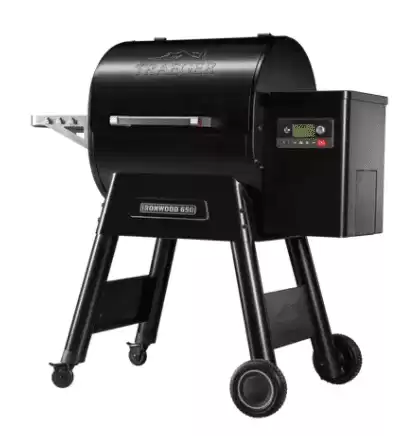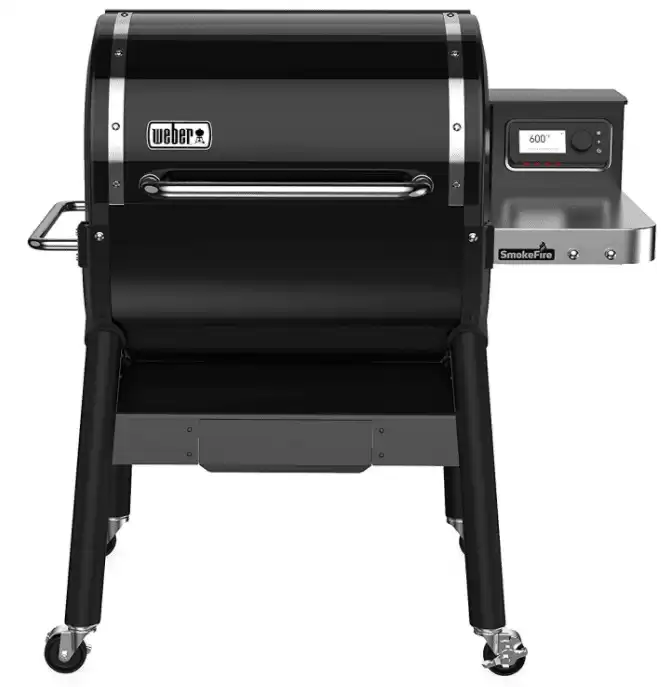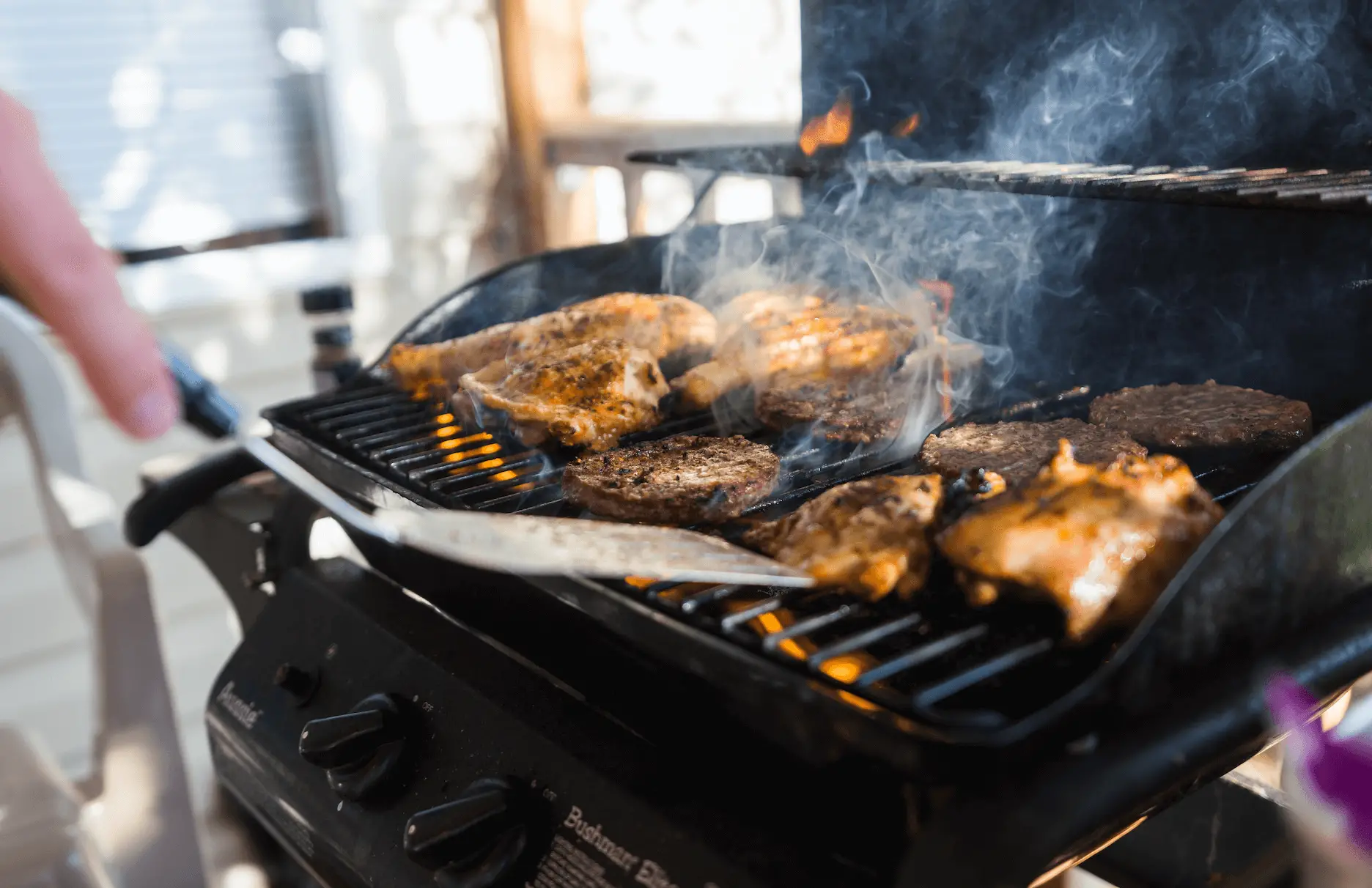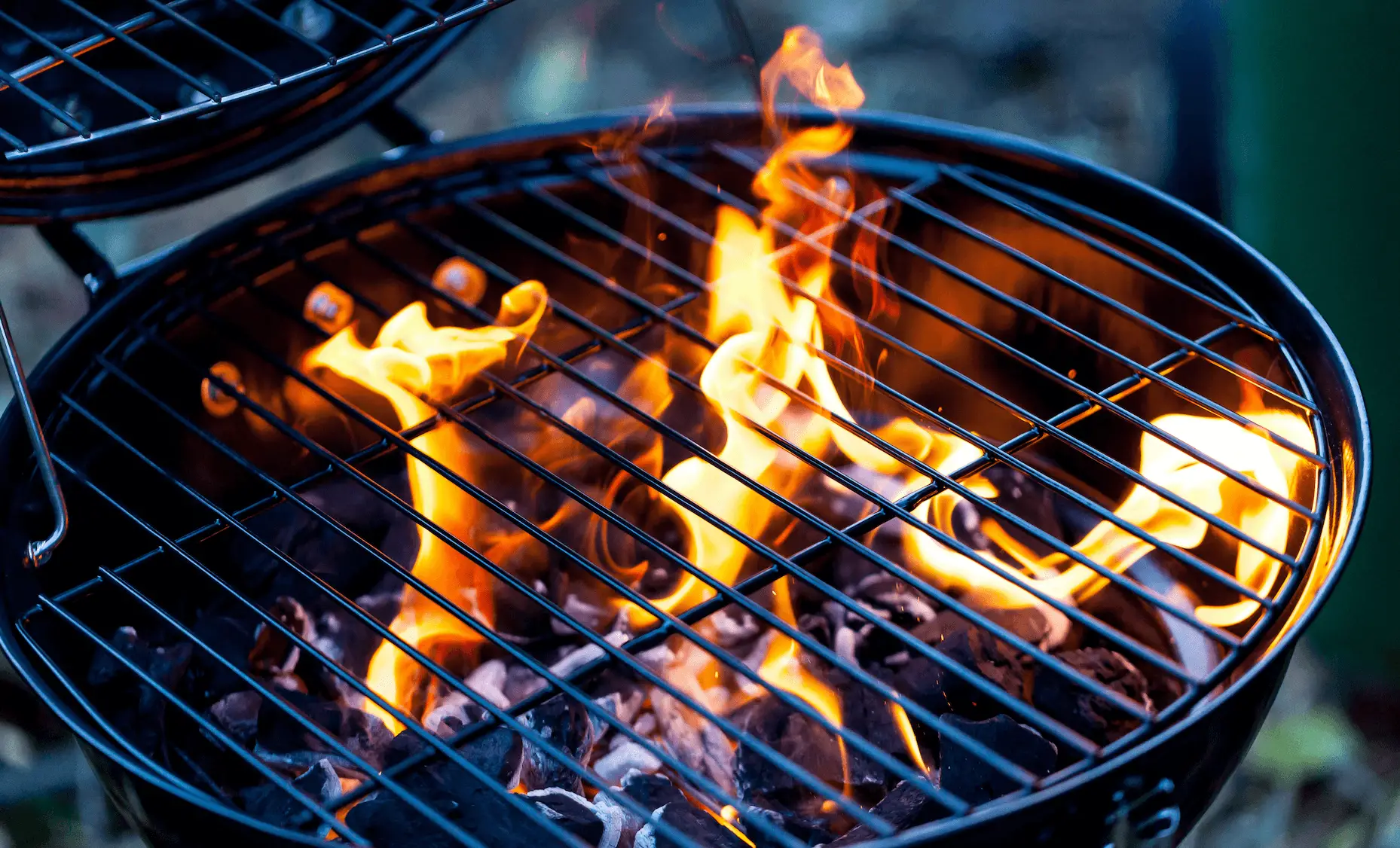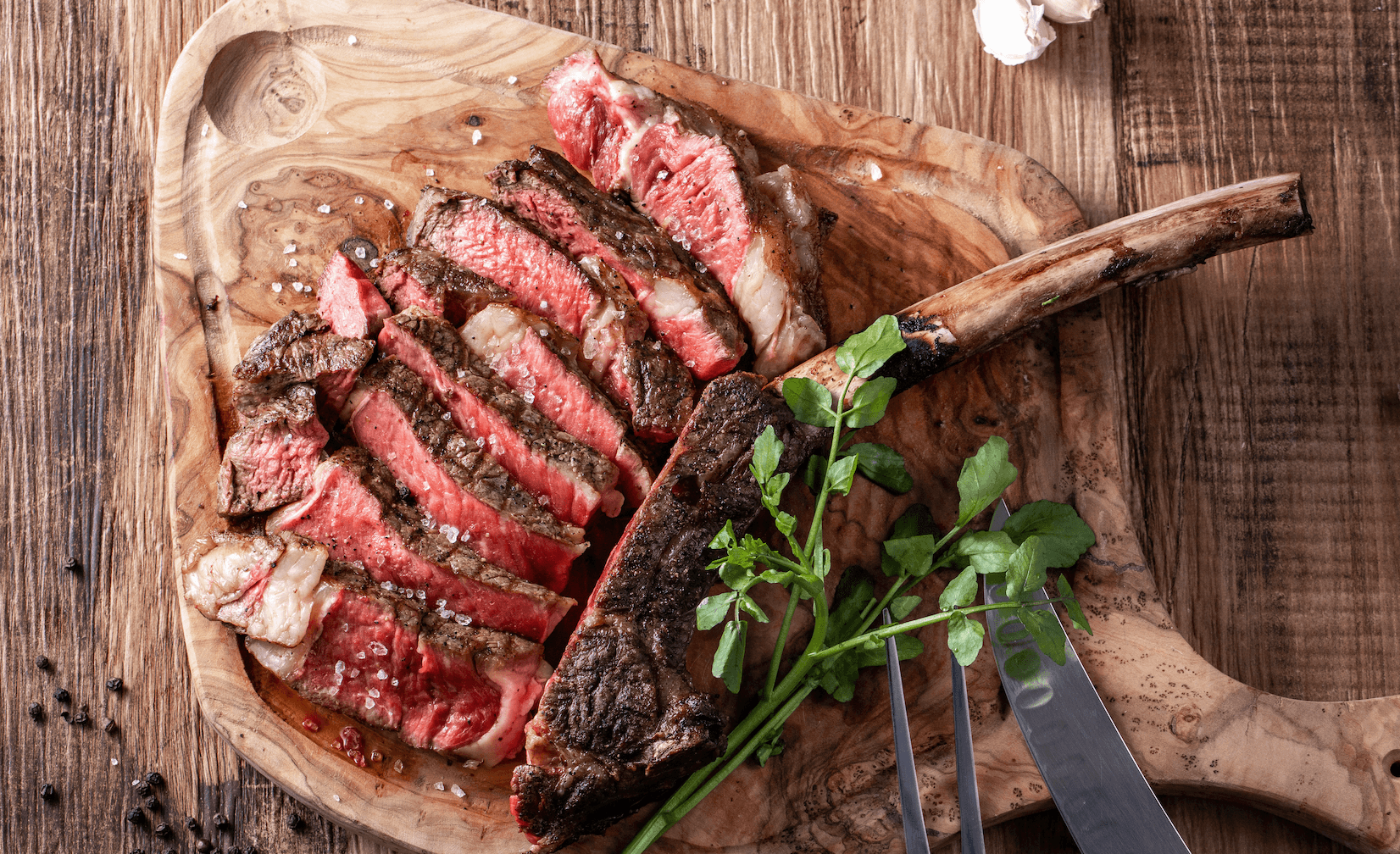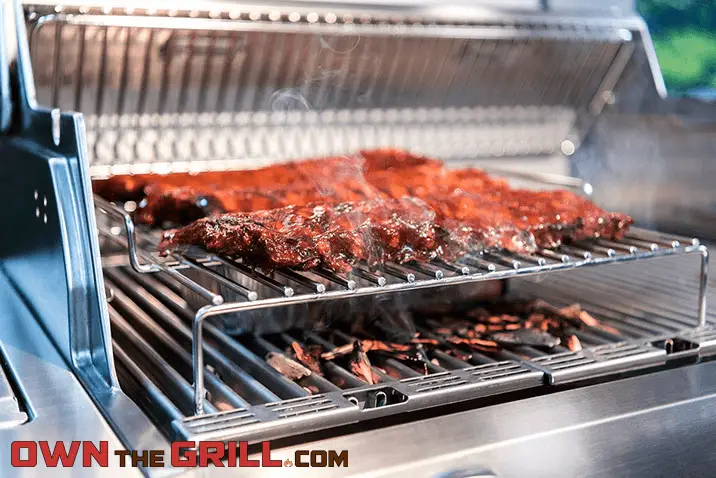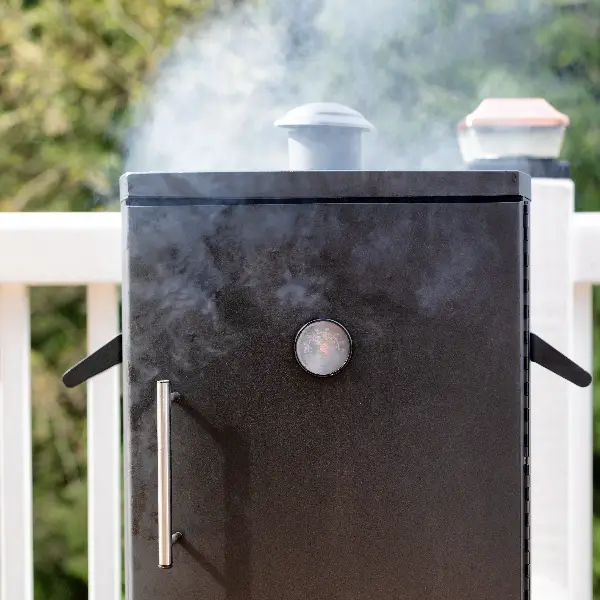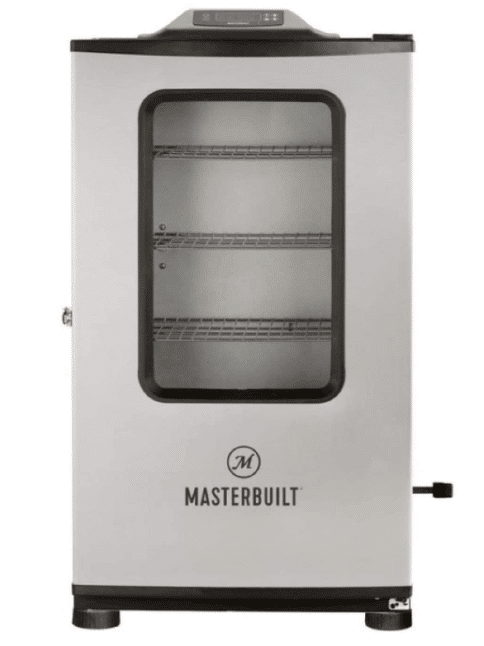This content contains affiliate links. If you make a purchase after clicking a link on this page, we might receive a commission at no cost to you.
I like to sit around the pool, barbecue, grill, stuff like that. Just the guy next door, I guess
– Dale Earnhardt Jr.
He may be one of the most decorated drivers in the history of NASCAR and have the sort of high-speed life that most of us can only dream of, but Dale Earnhardt Jr. knows exactly what makes the average American tick.
Fast cars and the glitz and glamor of victory might make you rich and famous, but they won’t make you happy in the same way that spending time with friends, family and a good grill will.
Fame is fleeting, but barbecue is eternal. Dale knows that, and that’s why he still spends his downtime hanging out and grilling.
Junior is also wise enough to know that when you reach the sort of plateau that he has, you can’t afford to stand behind, and pledge your allegiance to any brand, especially one that’s dedicated to the art of grilling.
But we’re not Dale, we’re not famous and we believe in finding the best tools to do the best job, and because we’re barbecue fiends and grilling fanatics, we set out to find the grills that’ll make the best BBQ this side of the Rocky Mountains.
It’s a tough job, but it’s one that we’ve put our grilling muscles and barbecuing know behind, and it’s led us here. You might have come across the brand names Traeger and Weber before, as they’re both staples in the grilling community.
The Traeger Ironwood, and the Weber Smokefire are their respective flagship smoker grills. In this article, we’ve compared and contrasted each so that by the end, you should know which is best for you between the Traeger Ironwood vs Weber Smokefire.
Note that we are comparing the most popular sizes to one another – each of the below grills come in bigger size options if you need more grill!
Traeger vs Weber – Head to Head
Traeger Ironwood 650 Pellet Grill
- 650 sq. in. cooking surface area
- 20 lb pellet hopper capacity
- WiFire Technology - manage your cook from a smartphone
- Also available on BBQGuys
Our first contender is the Ironwood 650 from the heavyweight champions of the wood pellet grilling world, Traeger Grills.
They’re a brand that was founded to push the cause of pellet grills as far as possible, because they believe that everything tastes better when it’s grilled using wood, and one of their flagship grills that they invite everyone to join them in the Traegerhood with is the Ironwood 650.
From the off, we fell in love with the Ironwood 650 almost straight away. It’s a near-perfect fusion of grilling technology, passion, and innovation.
It’s one of Traegers six in on grills that‘s as comfortable grilling as it is barbecuing, smoking, braising, roasting, and baking, and while we can’t confirm how good it is at making apple pies, as baking isn’t part of our skillset or in our wheelhouse of culinary expertise, we can happily confirm that it’s more than capable of doing everything else with the sort of deft touch and flourish that only a Traeger grill can.
With a total cooking space of six hundred and fifty square inches, the Traeger has enough room to grill up a storm of epic proportions and was easily able to handle the four burgers, three steaks, and chicken that we grilled.
It has two operational modes, manual which is the definition of simplicity, you just add whatever it is you want to cool to the grill, close the barrel, set the temperature, ignite the Ironwood and stand back and wait for it to finish.
The other uses the Traegers WiFire app to control the grilling. The app lets you set the temperature of the grill and the timer and also displays the temperature of the meat probe, so you’re constantly kept up to date and are always aware of what’s going on in the cooking process.
WiFIre also comes with its own recipe book, which you can open on your smartphone, select a recipe from, and then send it directly to your Ironwood. The grill then sets the temperature and timer for that recipe and takes over the cooking process.
Note: you can check out our full on Ironwood 650 review here for even more detail.
In fact, the only thing that the app can’t do is fire the grill up. You have to do that by hand, but as it’s just a matter of pushing a single button, it isn’t exactly going to give you back strain.
Then there’s the Ironwood’s hopper, which holds an incredible twenty pounds of pellets, and when it’s fired up, just keeps on making heat. Even though we spent most of the afternoon grilling, we didn’t have to stop to refuel the hopper once we just kept on going and it just kept on making heat.
And if you do start running out of pellets? The Traeger has a built-in sensor that alerts you and lets you know that you need to add more fuel to its fire, but as it wasn’t triggered during our lengthy grill session, we figure that you’ll have to put some serious cooking time in before it even becomes an issue.
The only other thing that we didn’t like about the Ironwood was its weight, and while the wheels are almost certainly only there for show, at nearly one hundred and fifty pounds if you did want to move the Ironwood, you’d need to be packing some serious muscle, or you run the risk of throwing your back out or giving yourself a hernia.
Weber SmokeFire EX4 Pellet Grill
- 672 sq. in. cooking surface area
- Temperature range of 200-600ºF
- 20 lb pellet hopper
Weber, during the last seven decades, has become synonymous with grilling. They’re a die-hard grilling institution that has more grilling firsts under their belt than just about any other brand in the barbecuing world.
And, being fully aware of their reputation, and even though we’d never used one of their grills before, we were more than a little happy to get our hands on the second generation Smokefire pellet grill for a solid afternoon of barbecuing. (They had some pretty severe issues with their first generation models, so they did a re-launch in the second half of 2020).
Even though they claim the Smokefire has six hundred and seventy-two square inches of cooking space, for all intents and purposes, it has the same grilling surface area that the Ironwood does, which means that you’ll be able to cook the same amount of food on both grills.
We did, and they both coped more than adequately with our cookout. That said, the Weber is capable of a faster food turn around if you crank it up as far as it will go, as that one hundred degrees temperature differential (the Smokefire can hit six hundred degrees, which is a little more than the Traeger) can significantly reduce your cooking time.
Or, at least it can if you want it too, but as we all know that slow is best as far as grilling and barbecue are concerned, it’s a feature that you’ll probably never use unless you’re really cranking it up for a sear. But it’s nice to know that the Weber has that additional gas in its tank should you need it.
Like the Ironwood, the Smokefire is a proponent of smart technology, but for hands-on grillers like us, the Weber app that lets you cook from your smartphone or tablet has the edge over the Traeger as it’s more instructional and still lets you be fully involved in every step of the grilling process.
And the manual control, which like the rest of the Smokefire is completely weather resistant, is also easy to straightforward and makes the art of good grilling and great barbecue simple and even more addictive than it already is.
The combination of technology and good old fashioned smoking and grilling know-how that Weber has infused into the design of the Smokefire have ensured that it’s a pellet grill that’s hard to resist when it comes to kitting out your yard.
And that leads us into another of the Smokefire’s user-friendly features – the size of it’s the hopper and how easy it is to clean-up after you’ve finished grilling, barbecuing, and smoking.
The size of the hopper is nice too, it’s twenty-pound limit means that you’ll be able to grill all day and well into the evening without having to refuel.
We filled the hopper to capacity, and by the time we were done grilling, we figured that there were enough pellets left for at least one, and maybe even two, more cookouts. The thing that impressed us the most though was how painless and trouble-free cleaning up the Smokefire was.
You take the scraper that comes with the Smokefire and just brush the ash into the grills removable drawer, and you’re good to go.
And that drawer? It also doubles up as a grease trap, so you just have to pull it out and empty its contents, and your Smokefire will be grease and ash-free. We told you it was easy, didn’t we?
It isn’t all plain grilling sailing with the Smokefire though. It does have one glaring problem that’s a real elephant in the barbecuing room. It’s heavier than a small family car. At one hundred and seventy-six pounds, it’s not the sort of grill that’s easy to move or relocate.
Unless you’re used to back-breaking manual labor or have been buddying up with Dolph Lundgren at the gym, you’re going to be hard pushed to move the Smokefire anywhere.
Once you’ve found a place for it in your yard, you’ll have to resign yourself to the fact that it’ll be staying in that spot for the foreseeable future.
[optin-monster slug=”tnxx7wq84kenca3q0jgu”]
And Our Winner Is…
We’ve already admitted we were, and are Traeger fanatics, but the Weber more than impressed us and made us re-evaluate our brand loyalty.
Both grills are easy to use, similarly priced, and will find favor with amateur grillers and dedicated barbecuers alike. But at the end of the day, the brand history and track record of Traeger gives them the nod for us.
The Weber Smokefire has a lot of potential, but I’d personally like to wait and see what customer feedback looks like from the second generation over the next few months.
Both of these grills are fantastic choices though and you really can’t go wrong. Let us know which is your favorite in the comments section below!


